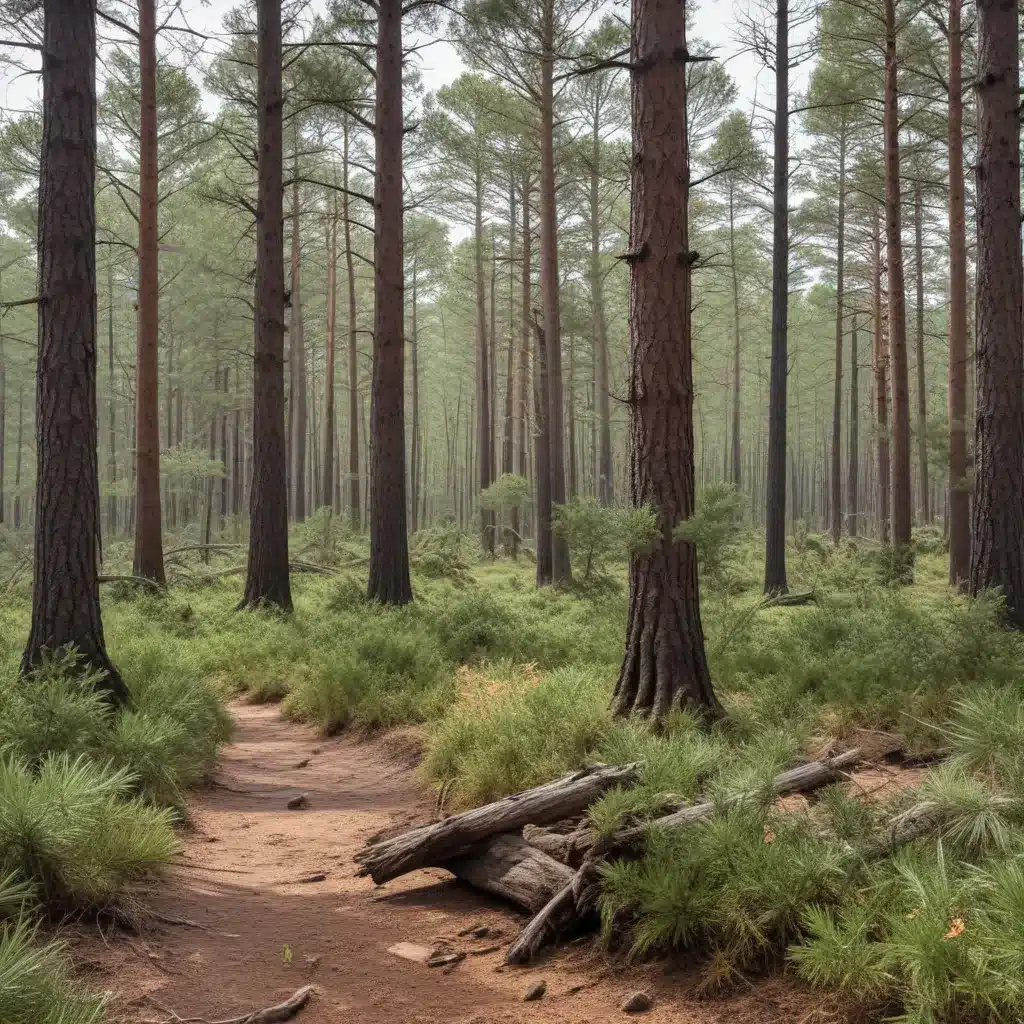
Crooked Pines Farm is a hidden gem nestled in the heart of the countryside, boasting a wide array of diverse habitats that captivate visitors of all ages. From towering coniferous forests to lush wetlands and marshes, and from vibrant deciduous woodlands to colorful meadows, our farm is a veritable playground for nature enthusiasts. Let’s embark on a captivating journey to uncover the remarkable flora and fauna that call Crooked Pines home.
Biomes of Crooked Pines
Coniferous Forests
Venture into the shadowy depths of our coniferous forests, where towering evergreen trees like Douglas firs, western redcedars, and Sitka spruces dominate the landscape. These ancient giants provide shelter and sustenance for a diverse array of wildlife, from the elusive spotted owls to the industrious red squirrels. Explore the thick understory, where you might stumble upon delicate bunchberries, fragrant wintergreen, and the vibrant red berries of the baneberry plant.
Wetlands and Marshes
Meandering through our lush wetlands and marshes, you’ll be captivated by the symphony of croaks, chirps, and splashes. Here, cattails, bulrushes, and wild irises thrive, providing essential habitat for a variety of waterfowl, amphibians, and aquatic invertebrates. Keep an eye out for the graceful great blue heron, the sprightly river otter, and the enigmatic painted turtle basking on fallen logs.
Deciduous Woodlands
Venture into our enchanting deciduous woodlands, where the dappled sunlight filters through the vibrant foliage of maple, oak, and birch trees. In the spring, witness the explosion of wildflowers like trilliums, Dutchman’s breeches, and Mayapples carpeting the forest floor. As summer transitions into fall, prepare to be awestruck by the brilliant display of reds, oranges, and golds that paint the landscape.
Distinctive Flora of Crooked Pines
Native Tree Species
Crooked Pines is home to a diverse array of native tree species, each with its own unique characteristics and adaptations. The towering eastern white pine, with its distinctive five-needled clusters, provides valuable nesting habitat for a variety of songbirds. The American chestnut, once a dominant feature of eastern forests, is making a comeback at Crooked Pines thanks to our conservation efforts. The stately sugar maple, renowned for its vibrant autumn foliage and sweet sap, is a beloved feature of our farm.
Understory Vegetation
Beyond the canopy, the understory vegetation at Crooked Pines is just as captivating. Delicate ferns like the maidenhair fern and the ostrich fern thrive in the shaded areas, while serviceberries, viburnums, and dogwoods provide an abundance of edible fruits and nectar for pollinators. The forest floor is carpeted with a diverse array of mosses, liverworts, and clubmosses, each playing a vital role in the ecosystem.
Wildflowers and Herbs
Crooked Pines is a paradise for wildflower enthusiasts, with a dazzling array of blooms that paint the landscape throughout the seasons. In the spring, you’ll find trilliums, bloodroots, and hepaticas adorning the forest floor, while summer brings the vibrant black-eyed Susans, purple coneflowers, and bee balm. Many of these wildflowers and herbs are not only beautiful but also provide valuable medicinal and culinary properties.
Fauna of Crooked Pines
Mammalian Residents
Crooked Pines is home to a diverse array of mammalian residents, from the elusive black bears and bobcats to the more commonly seen white-tailed deer, raccoons, and opossums. The meadows and grasslands provide ideal habitat for the Eastern cottontail rabbit and the red fox, while the wooded areas are frequented by the gray squirrel and the red bat.
Avian Diversity
The skies of Crooked Pines are alive with a symphony of avian life. Majestic birds of prey, such as the bald eagle and the red-tailed hawk, soar overhead, while the dense forests and wetlands provide nesting grounds for a variety of songbirds, including the wood thrush, the scarlet tanager, and the eastern bluebird. The meadows and fields are home to the grasshopper sparrow, the bobolink, and the Eastern meadowlark.
Invertebrate Life
Crooked Pines is a veritable oasis for invertebrates, from the stately monarch butterflies that flutter through our wildflower patches to the industrious honeybees that pollinate our fruit trees and vegetable gardens. The wetlands are teeming with dragonflies and damselflies, while the forest floor is home to a diverse array of earthworms, millipedes, and springtails.
Conservation Efforts in Crooked Pines
Habitat Preservation
At Crooked Pines, we are dedicated to preserving the natural habitats that make our farm so unique. We carefully manage our forests, wetlands, and meadows to ensure that they continue to thrive and provide essential resources for the diverse array of flora and fauna that call our farm home.
Invasive Species Management
We are also proactive in our efforts to manage invasive species that could threaten the delicate balance of our ecosystems. Our team works tirelessly to identify and eradicate any non-native plants or animals that may disrupt the natural order, ensuring that our native species can continue to flourish.
Ecological Restoration
Alongside our habitat preservation efforts, we are committed to restoring areas of Crooked Pines that have been impacted by human activity or natural disturbances. We work closely with local conservation organizations and environmental experts to develop and implement sustainable restoration strategies, from reforestation to wetland rehabilitation.
Crooked Pines Farm is a living testament to the incredible diversity of habitats and species that can thrive when we prioritize conservation and environmental stewardship. Whether you’re a seasoned nature enthusiast or a curious first-time visitor, we invite you to explore the wonders of Crooked Pines and discover the magic that lies within.


